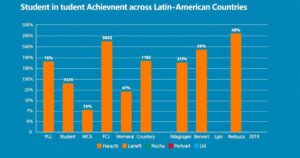Biased Metrics Compromise Climate Funding for Vulnerable Nations

Researchers from the Sustainable Finance Hub have warned that biased sustainable finance metrics could significantly impede climate investment in low- and middle-income countries (LMICs), which are already struggling to secure funds for necessary climate adaptation. These metrics, notably emissions intensity measures, unfairly disadvantage LMICs due to their lower GDPs and higher reliance on emissions-heavy industries. The authors advocate for new metrics that assess historical emissions performance and encourage collaboration among financial institutions to improve access to climate financing.
In a recent publication in Nature, experts from the Sustainable Finance Hub have highlighted the severe implications of biased metrics on climate investment, particularly in low- and middle-income countries (LMICs) that are disproportionately vulnerable to climate change. Despite facing the most significant threats, these nations are hindered by insufficient funding necessary for transitioning to sustainable economic systems. The cumulative nature of global emissions further complicates this issue, as inadequate financing for LMICs ultimately undermines the collective efforts to meet the Paris Agreement targets, leaving all investors exposed to escalating climate risks. During the forthcoming United Nations Climate Conference, COP29, slated to occur in Baku, Azerbaijan in November and termed the “finance COP,” negotiators are expected to concentrate on mobilizing the trillions of dollars requisite for achieving global climate objectives from both public and private sectors. With private investors increasingly aiming to align their financial portfolios with the Paris Agreement aims—specifically maintaining a global temperature rise within 1.5 °C above pre-industrial levels—a multitude of standards and frameworks have been developed to assess the emissions and climate risk profiles associated with sovereign debt portfolios. However, the researchers argue that these metrics, designed with good intentions, may inadvertently disadvantage countries that are in dire need of investment. They examined one particular metric assessing the “emissions intensity” of loans to governments and discovered that LMICs generally score unfavorably compared to high-income economies, primarily due to their lower Gross Domestic Products (GDPs) and higher dependence on emissions-intensive sectors, such as agriculture. Given that many LMICs are already grappling with excessive debt burdens, reliance on emissions-intensity metrics could further deter investors from extending loans to these nations that most urgently require climate financing. To address these challenges, the researchers advocate for a new paradigm in which sovereign investors collaborate with researchers to design metrics for evaluating sovereign debt portfolios that account for countries’ historical emissions and their projected paths forward. Moreover, they urge financial institutions, regulators, and researchers to collectively assess the unintended consequences that existing sustainable finance metrics may impose on the accessibility of climate finance for the nations that need it the most. Dr. Arjuna Dibley, the lead author and Head of the Sustainable Finance Hub, articulated the key concern: “LMICs face substantial challenges raising funds from private investors as it is. If well-meaning sustainable finance metrics make it harder again, this endangers our global response to climate change, which will have powerful negative effects for us all, including the private investors making these decisions.” Thus, there is an imperative need to refine sustainable finance metrics to ensure equitable access to climate investments for all nations, particularly those most at risk from the catastrophic impacts of climate change.
The article addresses a pressing concern regarding climate investment equity, emphasizing that low- and middle-income countries (LMICs) are at the forefront of climate vulnerability yet lack essential funding for adaptation and mitigation efforts. As global emissions contribute to climate change, the ability of LMICs to secure the necessary resources is crucial not only for their survival but also for the global community’s efforts to meet international climate commitments. The context is set against the backdrop of the upcoming COP29 conference, which aims to address financing strategies for climate action.
In conclusion, the research underscores a critical flaw in current sustainable finance metrics that inadvertently penalize nations most in need of investment. By re-evaluating and revising these metrics to incorporate historical and future emissions trajectories, the international community can foster a more inclusive approach to climate finance, ultimately benefiting both LMICs and global climate goals. The findings call for immediate action from financial stakeholders to prevent further hindrance to climate funding in vulnerable regions.
Original Source: phys.org








